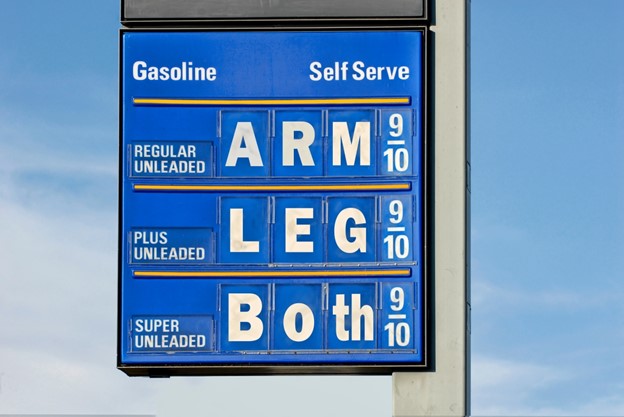
The Impact of Global Oil Prices on Gas Station Operations: Navigating Volatility with Nick Kambitsis of Raceway Petroleum

The oil industry is a global powerhouse, its tentacles stretching into virtually every sector of the economy. At the forefront of this vast network are gas stations, the retail endpoints of this global supply chain. These entities face the immediate brunt of the fluctuations in global oil prices, a volatility that significantly impacts their operations, profit margins, and strategies for sustainability. This article from Nick Kambitsis, owner of Raceway Petroleum, delves into the complexities of how global oil prices influence gas station operations and explores strategies to manage these impacts effectively.
The Ripple Effect of Global Oil Prices on Gas Stations
Global oil prices are subject to a myriad of factors, including geopolitical tensions, supply and demand dynamics, regulatory changes, and natural disasters. Nick Kambitsis of Raceway Petroleum understands these prices determine the wholesale cost of the fuel gas stations purchase, which in turn affects their retail pricing and profit margins. A spike in oil prices can compress these margins, while a drop can expand them, albeit with a lag due to existing inventory costs.
Impact on Profit Margins
Gas stations typically operate on slim profit margins. The immediate effect of an increase in global oil prices is an increase in the cost of inventory. However, due to competitive pressures and the inelastic nature of fuel demand in the short term, gas stations cannot always pass these costs onto consumers immediately or fully. This delay in price adjustment tends to squeeze the profit margins of gas stations, impacting their overall operational sustainability.
Conversely, a sudden drop in oil prices can lead to temporary gains in profit margins. Stations with higher-priced inventory are faced with the challenge of competing with those who have purchased at the newer, lower prices. The timing of inventory turnover, thus, becomes a critical factor in managing profitability amidst fluctuating oil prices.
Cash Flow and Inventory Management
Fluctuations in oil prices directly impact the cash flow of gas stations. Higher oil prices mean higher costs for replenishing fuel stocks, tying up more working capital in inventory. This can strain the financial liquidity of gas stations, especially those that are independently owned or operating with thin cash reserves. Nick Kambitsis of Raceway Petroleum explains that effective inventory management becomes crucial in such scenarios, requiring stations to thoroughly optimize their purchasing strategies and inventory levels in order to maintain balance between having enough fuel to meet demand and not tying up excessive capital in stock.
Strategies for Managing Impacts
Nick Kambitsis of Raceway Petroleum notes that, in response to the volatile nature of oil prices, gas stations have developed and employed various strategies to safeguard their operations and profit margins.
- Dynamic Pricing
One of the most direct approaches to managing fluctuations in oil prices is through dynamic pricing. This strategy involves adjusting retail fuel prices in response to changes in wholesale costs and competitive pressures. Advanced software and algorithms can help gas station operators to make these adjustments promptly and effectively. Dynamic pricing allows gas stations to protect their margins during periods of rapid oil price changes. - Diversification of Revenue Streams
To mitigate the impact of fluctuating oil prices, many gas stations have diversified their revenue streams beyond fuel sales. Convenience store operations, car wash services, and auto repair services are common additions that provide alternative sources of income. These services often carry higher profit margins than fuel sales, helping to stabilize overall business performance amidst the volatility of oil prices. - Cost Control Measures
Efficient cost management is another vital strategy for navigating the challenges posed by fluctuating oil prices. This can include measures such as reducing energy consumption through LED lighting and energy-efficient pumps, automating operations to reduce labor costs, and negotiating better terms with suppliers. By controlling operational costs, gas stations can improve their financial resilience, enabling them to weather periods of unfavorable oil price movements. - Hedging
Some gas station chains and independent operators use financial instruments to hedge against significant fluctuations in oil prices. This strategy involves entering into contracts that lock in fuel prices for a future date, protecting the business from potential spikes in oil prices. While hedging can provide a safety net, it requires an especially sophisticated understanding of financial markets and carries its own risks.
The impact of global oil prices on gas station operations is a multifaceted challenge that requires a proactive and strategic approach to management. By understanding the dynamics of oil price fluctuations and implementing strategies such as dynamic pricing, revenue diversification, cost control, and hedging, gas stations can efficiently navigate the complexities of this market. Nick Kambitsis of Raceway Petroleum emphasizes that these strategies not only help in managing the immediate impacts on profit margins, but also contribute to the long-term sustainability and resilience of gas station operations in the face of global oil price volatility.
